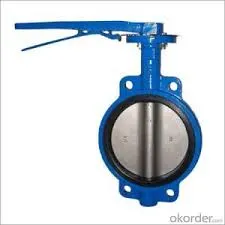
- Call Us
- +8618633052223
- njhdvlz@163.com
сеп. . 16, 2024 08:12 Back to list
Lug Type Butterfly Valve Installation Guide | Expert Exporter
Installation of Lug Type Butterfly Valves A Comprehensive Guide for Exporters
Lug type butterfly valves have gained significant traction in various industrial applications due to their simplicity, cost-effectiveness, and reliable performance. As exporters of these valves, understanding the intricacies of their installation is paramount for ensuring customer satisfaction and operational efficiency.
Understanding Lug Type Butterfly Valves
Lug type butterfly valves are characterized by their unique mounting system, which involves threaded lugs on the valve body. This design allows for easy installation and removal, making them ideal for services requiring frequent maintenance or replacement. These valves are often used in applications involving water, gas, and other fluids, and they can operate efficiently in both full open and closed positions.
Preparation for Installation
Before beginning the installation process, it is essential to conduct a thorough assessment of the valve and its application. Ensure that the valve is suitable for the specific medium, pressure, and temperature conditions. Check for any shipping damages and verify that all necessary components, such as gaskets and bolts, are included.
Installation Steps
lug type butterfly valve installation exporter

1. Positioning the Valve Start by placing the lug type butterfly valve between the flanges of the pipeline. Ensure that the valve body is aligned properly with the flow direction indicated on the valve.
2. Securing the Valve Insert bolts through the lugs of the valve and into the corresponding holes on the flange. Tighten the bolts evenly using a torque wrench to avoid warping the valve body. It is crucial to follow the manufacturer's specified torque values to ensure a proper seal and prevent leaks.
3. Checking for Leaks Once the valve is secured, conduct a pressure test to check for any leaks. This step is vital, as it guarantees the integrity of the installation. If leaks are detected, release pressure, tighten the bolts, and test again.
4. Operational Testing After confirming there are no leaks, operate the valve to ensure smooth functionality. This includes opening and closing the valve fully to check for resistance or any operational issues.
5. Final Inspection Conduct a final inspection of the installation to ensure everything meets industry safety standards. This includes verifying that the valve is installed in accordance with any applicable codes and regulations.
Conclusion
For exporters of lug type butterfly valves, understanding the installation process is essential to providing accurate guidance and support to clients. A well-installed valve will enhance system performance, increase longevity, and reduce the need for maintenance. By following the outlined steps and conducting thorough checks, exporters can ensure that their customers receive products that not only meet expectations but also operate flawlessly in demanding conditions. As the demand for reliable and efficient valves continues to rise, emphasis on proper installation will remain a key factor in maintaining competitiveness in the global market.
-
Double Flanged Short Pattern Butterfly Valve | Compact, Efficient Flow
NewsAug.01,2025
-
Precise 3-Inch Butterfly Valve Dimensions | Durable Flow
NewsJul.31,2025
-
3 Butterfly Valve Dimensions | GPT-4 Turbo Precision Specs
NewsJul.31,2025
-
Stainless Steel Sanitary Butterfly Valve for Hygienic Flow Control
NewsJul.30,2025
-
High-Performance Groove Butterfly Valve for Easy Installation
NewsJul.30,2025
-
High-Quality 2 Inch Butterfly Valve for Precise Flow Control
NewsJul.29,2025